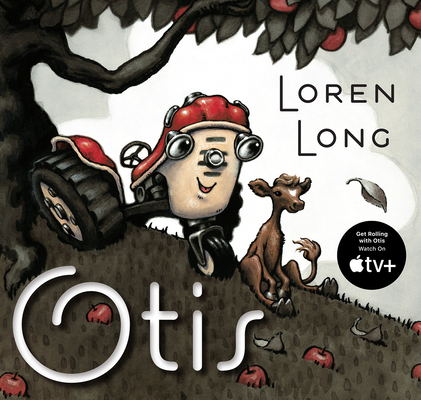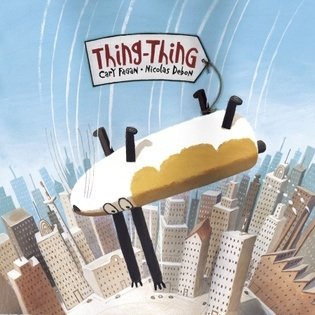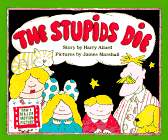My school librarian passed on a link to a New York Times article about the decline of picture books. I've tried to move on to other things, but like an untreated abscess, the words keep hitting a nerve.
For years now, we've been hearing that the days of the published book are numbered. The future is all about e-publishing, apps and other techie gadgetry. I've tried to tune out the Chicken Little cries, but sometimes the Kindle/iPad/Kobo phenomenon seems overwhelming. Maybe I'm the proverbial ostrich having a bad day at the beach. After all, I steadfastly believed my scratchy vinyl Olivia Newton-John record collection was timeless.
But picture books...there must always be picture books. How can a screen image replace the glossy pages held in two hands, resting in a lap? Even if the sky is falling, picture books will be saved. Combining clever phrasing and glorious art, they will continue to championed by parents, grandparents, teachers, librarians and, yes, children.
Perhaps not, says the esteemed New York Times. At first glance, it is hard to refute the anecdotal evidence brought forth. Fewer picture books are being published and even established writers like Jon Scieszka are seeing sales declines. Yes, it must be time for writing the eulogy to picture books. It can remain in draft form, but best to be prepared. (Indeed, the wave of cassettes and CDs caught me by surprise. And don't even try to tell me that the iPod I received as a gift should come out of the closet.)
Eulogy, schmeulogy. I am clear-headed enough to realize that something is amiss with respect to picture book publishing, but it seems the major players are pointing fingers away from themselves and failing to realize/acknowledge how they are part of the problem.
It starts with the agents and publishers. More and more are saying, No picture books, please. (The "please" has perfunctory value; better that than spitting.) Picture books require too much time and money to develop. There is too much back and forth required with both the writer and the illustrator. And, hey, picture books don't sell.
Now YA,...that's hot.
The big box bookstores make matters worse. There's no time (or display space) to market the unknown. Rest assured, a casual browser can easily spot all things Seussian—well not all…it seems my beloved Butter Battle Book, an ode to the Cold War, has gone the way of the Berlin Wall. Shelves prominently feature proven bestsellers like Goodnight, Moon, Where the Wild Things Are and books about bus-riding pigeons, free-spirited pigs named Olivia and a dog with flatulence. Gosh, doesn't that about cover it? Oh, wait! To be fair, there's always room for something from the latest celebrity author. Other picture books don't sell.
We need to increase shelf space for YA. To be more specific, vampire infested YA.
If you don't publish them, there are fewer to try to market. If there are fewer to market, fewer titles end up in stores. If there are fewer in stores, there are fewer sales. By golly, picture books don't sell! Chicken Little is on to something!
The article puts much of the blame on parents who fail to see value in picture books. Words that make the reader. Big words, lots of words. Chapter books...yes, that's it! Get your four-year-old into Anne of Green Gables. When he's eight, let him (or make him) digest War and Peace. (Oh, that's not a tummy ache, Johnny. When you become a doctor after graduating with honors at Harvard, you'll know that. If you need a break, how about devouring some light reading from the New England Journal of Medicine?)
Crazy? Of course. Let the (overly) ambitious parent talk with the wallet, but teachers, other parents and, yes, book sellers should interrupt the monologue. If I see a mother buying her son with the chocolate milk mustache Hemingway's Old Man and the Sea, I am obliged to speak up. WARNING: Premature reading of this classic can lead to irreversible aliteracy.
But let's be real. I cannot imagine that this type of overzealous (and delusional) parent is typical. I do not believe that this small contingency is to blame for The Imminent Extinction of Picture Books. No, I won't refute the comments in the article. Comments from people on the fringe stand out. We remember them vividly. But it is irresponsible to portray these attention-grabbing anecdotes as the new norm or even a significant trend.
There are brilliant picture books—some of them even wordless—that must get in the hands of more readers, young and old(er). Agents, publishers and booksellers need to be more reflective, more creative in nurturing this essential domain of the book industry. That there is a slump in sales comes as no surprise. In tough economic times, it's a hard sell to get a single parent or underemployed family to shell out twenty-five bucks for a thin book that can be read in ten minutes. In a financial pinch, many overlook the gallery exhibit splashed across the pages. They fail to recognize the joy to come from repeated readings or the sparks of imagination ignited by the fusion of words and pictures. Thank goodness for libraries. Sales may be stalled, but there remains a way to access a treasure trove of picture books.
And when things look rosier again, let's hope that publishers and booksellers will begin to take chances again. There are Zetta Elliotts, Troy Wilsons and Nicolai Popovs waiting to be discovered. Let Chicken Little go back to worrying about the sky. The world needs picture books. At least that's the way it is in the world I know.













